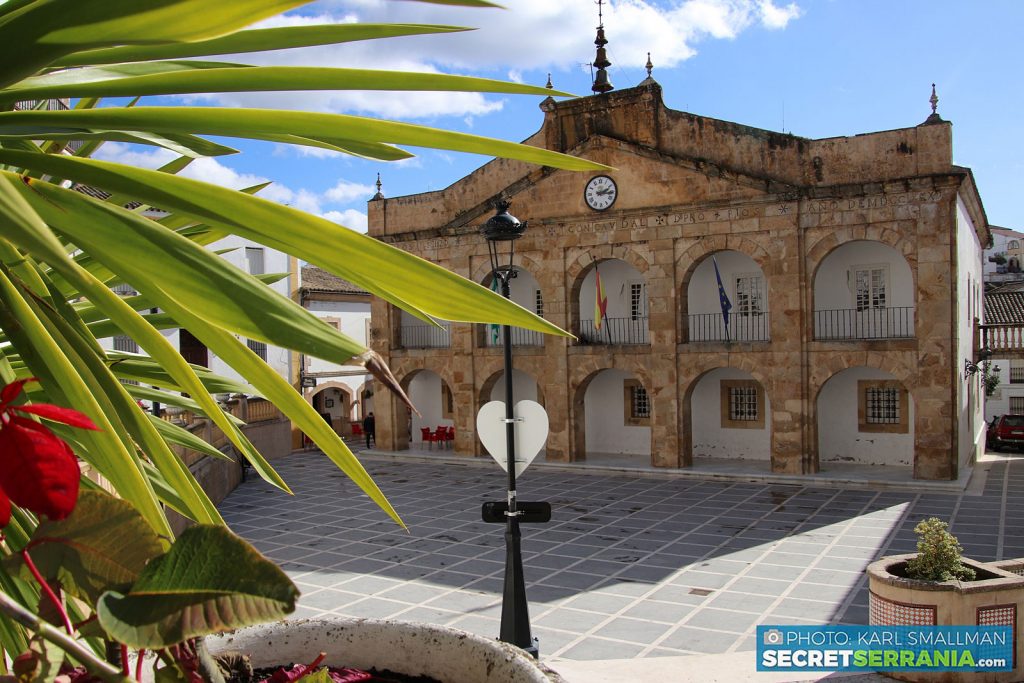What do Jérez, Arcos, Morón, Vejer, Chiclana, Conil, Jimena, Castellar and a number of other Andalucían towns have in common? Their full and proper names are ‘…de la frontera’. They are all ‘on the frontier’, and yet, they clearly aren’t. The Cádiz city of Jerez de la Frontera, for example, is 242 kilometres away from the nearest frontier – that is to say, Portugal. So, what’s going on? Paul Whitelock investigates.
One could argue that early Spanish cartographers were not very good at their jobs, but the fact is, the place names make perfect sense when you go back a few centuries to the time of the Moors and the Kingdom of Granada.
The Christian forces of Aragon and Castile were engaged in la Reconquista, slowly taking the country back from the Moors. These North African colonists had arrived in the peninsula in 711 and had been in control of almost all of Spain and Portugal for over seven hundred and fifty years. The Reconquista finally ended when Granada, capital of the ‘Nazarí Kingdom’, fell in 1492, the same year as Spain discovered the Americas.
Standing between the Christian and Moorish territories while leading up to the final push in the later XV Century were a number of frontier towns which watched uneasily over a no-man’s-land, or Terra Nullius as it was officially known – an unclaimed space between the two forces. During its existence, this border strip had great military, political, economic, religious and cultural importance. Beyond being a border like many others, it was for more than two centuries the European border between Christianity and Islam. It was, therefore, a place of exchange and barter, which kept alive in both territories the spirit of the Christian crusade and the Islamic jihad together with the chivalric ideal, already anachronistic in other European territories.
It also made possible illicit economic activities, such as trade in oriental products, as well as regular military incursions, aimed at taking booty, as well as the capture of hostages with whom to maintain the slave business, or simply to negotiate the return of captives. Religious orders took sides in this regard. The border was a key element in the formation of the identity of Andalucía and in the formation of the vision of Islam throughout Spain.
While another culture might have dropped the Arab names once they reconquered their territory, the Spanish were gracious enough to keep them. Such towns as Vélez-this and Alhama-that are quite common (the first comes from the Arab word for ‘land’, the second for ‘baths’). Indeed, anything beginning in Al – comes from the Arab prefix ‘the’: Alhambra, Almería, Alpujarras…
Al-Ándalus, as far as the Moors were concerned, means and meant anything which was under Moorish control in the Peninsula – at some point, almost as far north as Pamplona.
Of all of the ‘frontera’ towns, mostly located in Cádiz, the largest is Jerez de la Frontera, with its magnificent Alcázar, an XI Century Moorish fortress. The Moors called the city ‘Sherish’ and held it until 1264, although the Christian forces controlled the surrounding lands from 1248. The town would become a ‘frontier’ with the Granada kingdom.
Jerez is the largest non-capital city in all of Andalucía, with a population of around 210,000 souls (larger than Cadiz – its provincial capital – as well as Almería, Jaén and Huelva). It is known for wine, horses, flamenco and motorcycles.
Arcos de la Frontera is one of the most spectacular hill towns around these parts. Located in Cádiz province it is in two parts – the Casco Antiguo up the hill and the modern town below. The views from the square outside the Parador hotel at the very top are stunning.
Another town on our list is Chiclana de la Frontera. It is just up the road from both Conil de la Frontera and Vejer de la Frontera. There must have been a gleam in the eye of King Fernándo IV when he got into the swing of naming his towns in the Most Loyal Province of Cádiz…
Chiclana is just 24 km south of the city of Cádiz and has become a tourist resort with the largest number of hotel beds anywhere in the province. With a population of over 84,000, the town is only marginally smaller than its nearby capital city. The town is noted for its monuments and its wineries.
Next door’s Conil de la Frontera, again in reference to the far-off ‘frontier’ with Granada, is a beautiful resort which grows five-fold during the summer season.
The ‘frontier’ town with the most charm must nevertheless be Vejer de la Frontera, a small coastal town perched high on a hill with a view of the Atlantic. Vejer is a member of the ‘Prettiest Towns in Spain Association’ and is a maze of narrow streets and white houses.

Ayuntamiento de Cortes de la Frontera
There are other frontier towns dotted about Andalucía. Málaga province can boast pretty little Cortes de la Frontera, Córdoba has Aguilar de la Frontera and Huelva has Palos de la Frontera, the port from which Christopher Columbus set sail in 1492 with three ships and 90 men in what turned out to be a landmark journey. For that reason Palos is known as the cradle of the Discovery of America. Morón de la Frontera, in the province of Seville, owes its name to having been a major garrison town, once it had been conquered in 1240 by Fernando III, from which the Christian forces could harass the Moors. Rosal de la Frontera in Huelva province is actually on the border – with Portugal!
For two hundred years, the sometimes uneasy border between the Christian and Moorish cultures stood until Spain’s Reyes Católicos, the Catholic Monarchs Fernando of Aragon and Isabel of Castille, brought the ‘re-conquest’ to an end in 1492, and modern Spain was born as a result.
